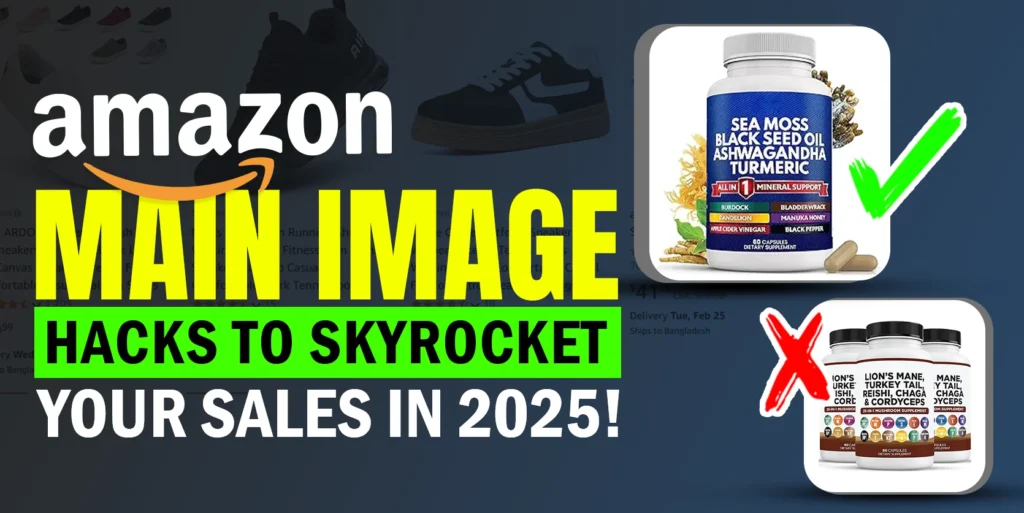Monitoring Key Performance Indicators (KPIs) is crucial for optimizing your performance on Amazon. But with so many metrics available, which ones should you focus on? This blog post will guide you through the most important KPIs to help you boost your Amazon sales and manage your business effectively.
Understanding KPIs
KPIs, or Key Performance Indicators, are special scores used to track your progress. They help you measure the effectiveness of various aspects of your business on Amazon. By focusing on these KPIs, you can identify areas of improvement and make data-driven decisions.
Conversion Rate: The Most Important KPI
The conversion rate is the percentage of shoppers who visit a product page and make a purchase. For instance, if 100 people visit your product page and 10 make a purchase, your conversion rate is 10%. This KPI indicates how well your product page converts visitors into customers.
How to Find Your Conversion Rate
To find your conversion rate on Amazon, follow these steps:
1. Go to Seller Central.
2. Navigate to Reports > Business Reports.
3. On the left-hand side, click on “Detail Page Sales and Traffic by Child Items.”
4. Look for the column called “Unit Session Percentage.” This is your conversion rate.
A good conversion rate on Amazon typically ranges between 10% to 15%. If your rate is below 10%, consider optimizing your product listings. If it’s above 15%, your products are performing well.
Keyword Ranking: Stand Out from Competitors
Keyword ranking shows how well your products appear when someone searches on Amazon with certain words. Higher keyword rankings mean more visibility and potentially more sales.
How to Improve Your Keyword Ranking
To improve your keyword ranking:
1. Identify and use relevant keywords in your product titles, descriptions, and bullet points.
2. Optimize your listings based on customer search behavior.
3. Continuously monitor and adjust your keywords to stay competitive.
Inventory Performance Index (IPI): Manage Your Inventory Efficiently
The Inventory Performance Index (IPI) measures how well you manage your inventory. It looks at factors like stock levels, sell-through rates, and restocking efficiency.
How to Check Your IPI
To check your IPI:
1. Go to Seller Central.
2. Find the Inventory Performance Index section.
3. Click on the arrow and select the score for the marketplace you want to view.
Your IPI score is influenced by excess inventory, sell-through rate, in-stock rate, and stranded inventory. Aim to keep these factors within Amazon’s preferred levels to maintain a high IPI score.
TACoS (Total Advertising Cost of Sales): Measure Ad Spend Efficiency
TACoS measures how much money you spend on advertising for every dollar you make in sales. For example, if you spend $10 on ads and make $100 in sales, your TACoS is 10%.
What is a Good TACoS Percentage?
A good TACoS percentage ranges between 5% to 10%. A lower TACoS indicates that your ads are more effective and your business is more profitable.
RoAS (Return on Advertising Spend): Assess Ad Performance
RoAS shows how much revenue your ads generate compared to their cost. For instance, if you spend $10 on ads and make $100 in sales, your RoAS is 10.
Why Monitor RoAS?
Monitoring RoAS helps you understand the effectiveness of your advertising campaigns. A higher RoAS means better ad performance, which translates to higher profitability.
eTACoS (Advertising Cost of Sales): Track Profitability of Ads
eTACoS measures the profitability of your Amazon ads by comparing ad spend to sales revenue. For example, if you spend $100 on ads and make $200 in sales, your eTACoS is 50%.
Optimal eTACoS Percentage
Aim for an eTACoS between 15% to 20% to ensure profitability. Lower eTACoS means you’re spending less on ads for the same amount of sales.
Account Health: Maintain Your Selling Privileges
Account Health is a critical metric that shows how well you comply with Amazon’s rules and customer service standards. It includes metrics like order defect rate, late shipment rate, and policy violations.
How to Improve Account Health
To maintain good account health:
1. Ship orders on time.
2. Provide excellent customer service.
3. Follow Amazon’s guidelines and policies.
Amazon Fees: Keep Track of Costs
Whether you use Fulfillment by Amazon (FBA) or Fulfillment by Merchant (FBM), you will incur various fees. Monitoring these fees helps you ensure profitability.
Managing Amazon Fees
1. Understand all the fees you might pay, including referral and FBA fees.
2. Regularly review your fees to ensure accuracy.
3. Adjust your pricing strategy to cover costs and maintain profitability.
Conclusion
Tracking these KPIs will help you understand your business performance on Amazon and identify areas for improvement. By focusing on conversion rate, keyword ranking, IPI, TACoS, RoAS, eTACoS, and account health, you can make informed decisions to boost your sales and grow your Amazon business.
If you think this post has been helpful for you, please share this post with your friends and the e-commerce community. You can also check out our website www.ecomclips.com and get more updates! Keep browsing our blog to get more articles related to e-commerce. You can also mail us at info@ecomclips.com if you need any more help with Amazon.



